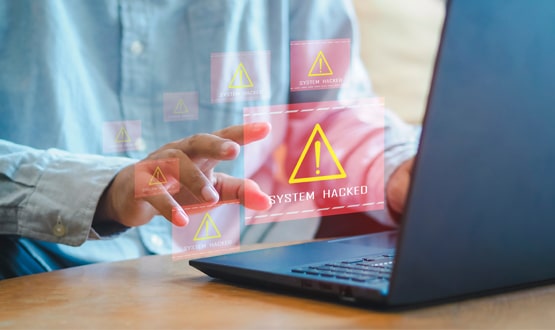Technology’s role in creating a digital front door for sexual health provision
- 10 March 2020

While a lot is said about how health tech could improve primary and secondary care, not much reported about sexual health. Susan Bunn, co-founder of Inform Health, explores how embracing ‘self-service’ could be key to empowering patients.
Let’s make no bones about it, the state of the UK’s sexual health is a growing cause for concern.
There’s a new sexually transmitted infection (STI) diagnosis in England almost every minute and cases of Gonorrhoea and Syphilis have increased by 249% and 165% respectively in the decade leading up to 2018.
To add to the problem, a new report issued by two of the country’s leading sexual health charities (The Terrence Higgins Trust and The British Association for Sexual Health and HIV) points to a 25% government cut in sexual health spending in England since 2014.
In response, almost half of councils in England have confirmed plans to cut sexual health spending at local level, equalling the potential for reduced hours in clinic opening times or, in the worst cases, complete clinic closures.
With record demand for sexual health services, which topped 3.3 million patient visits to sexual health clinics in England last year, the public health timebomb this represents cannot be underestimated. Indeed, the Local Government Association (LGA) has warned that some areas could struggle to respond to unforeseen STI outbreaks, unless cuts are revised.
While the LGA and sexual health charities quite rightly put pressure on central government to reverse cuts, there remains an urgent need to extend provision to adequately meet increased demand against the context of a significantly reduced financial envelope.
Embracing “self service”
So, what’s the solution?
Of course, there is no magic wand for solving the problem of expanding provision to cater for growing demand, despite cuts – but innovative technology does have a major role to play.
If the objective is to maintain (or even enhance) access and outcomes for more patients, while operating with less, then embracing sexual health ‘self-service’ could form part of the solution.
For instance, if patients were given the opportunity (and platform) to test themselves for STIs, by logging on to a secure website or mobile app, creating a patient record and ordering a postal kit then, assuming negative results, services could be effectively delivered, without the patient stepping foot in a clinic. By integrating such systems with labs, services could be delivered far more cost-effectively, while patients would benefit from increased convenience and autonomy over their sexual health.
Additionally, should postal kits return non-negative STI results, patients would need to be notified appropriately. Here, discreet automated text messages could be sent to patients indicating that a new message is ready to view on their online dashboard. Once securely accessed, this message would instruct the patient to book an appointment through the online platform to discuss results, treatment options and preventative measures. Automating the partner notification process and moving the reliance on the service to notify, instead allowing the patient to anonymously notify their partners offers significant time and cost savings for clinics.
For common conditions like chlamydia, self-service could be extended further through integration with pharmacies, which could dispense medication direct to patients, at a time and location of their choosing.
It goes without saying that measures would need to be in place so that service providers could intervene, should patients stray from their online treatment pathway – a safety net easily facilitated by automated push notifications.
Running through the same questions
Another way self-managed sexual health can help providers do more with less is the joined-up, electronic personal health record such a platform would create for the patient, by the patient.
Rather than use precious clinical resource, why not allow patients to document their own histories and contribute to their own electronic patient record? This would remove the need for clinicians to run through the same old questions at the start of a physical consultation. Instead, up-to-date information would be completed by the patient in advance of their appointment, which would pre-populate the patient record and be available for the clinician to review with the patient. This would lead to quicker, more efficient appointments and require less clinical resource.
It isn’t just testing and treatment of STIs that could be facilitated more cost-effectively by adopting ‘self-service’. Accessing repeat contraception, which typically involves a physical appointment with a healthcare professional, could be self-managed by introducing a digital front door for patients in the community to order contraception online for home delivery.
Migration away from clinic-based appointments towards an online triage system that collects specific data before directing patients to the most appropriate pathway of care is a logical evolution of sexual healthcare provision. Not only does it support commissioners and providers alike in their mission to do more with less, it empowers patients to access services with greater convenience and autonomy.
Digital natives
Considering that around half of all new STIs are confirmed in people under 25, user uptake is unlikely to be an issue. Digital native Millennials and Generation Zs already manage multiple facets of their lives online. Self-managing sexual health would be an added convenience to a predominance of patients and free-up resource for those who would prefer or require physical consultations.
Ultimately, as austerity shows no sign of abating, it’s essential that technology innovation, like ‘self-service’, is harnessed so that providers are equipped to tackle the higher levels of demand, while patients are appropriately supported to maintain good standards of sexual health and wellbeing.





1 Comments
At Better2Know we have been embracing the use of technology in providing our confidential and accurate sexual health testing services for over ten years. We have been providing online test ordering, appointment booking and results for over five years. Most of our patients are over 25 and all our patients welcome the change. Happy to discuss with public providers how we can help.
Comments are closed.